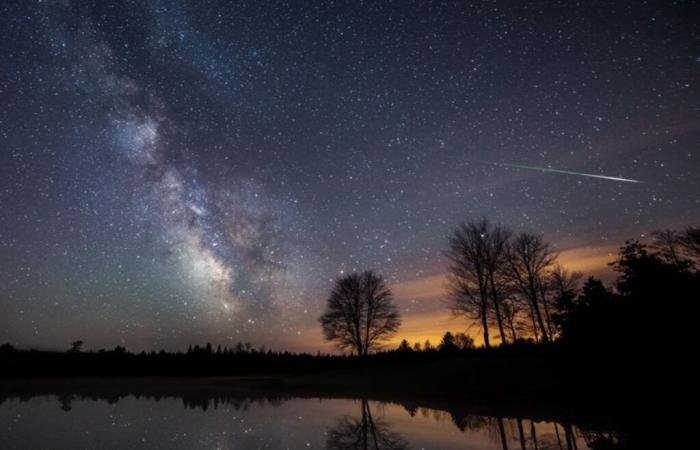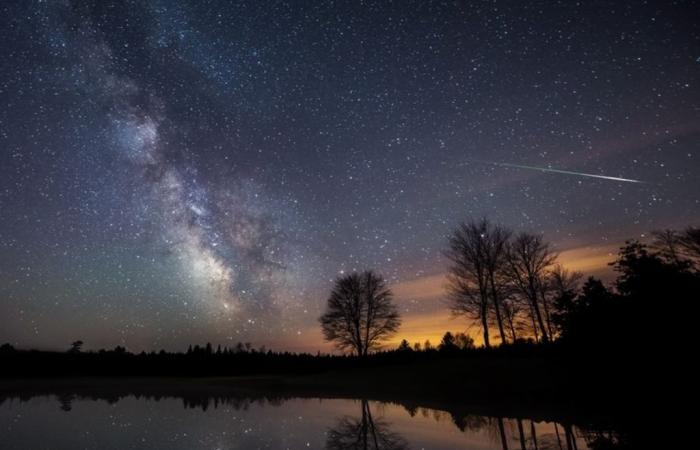The first great astronomical event in May will be the ETA Acuáridas, remnants of Comet Halley. Its peak will occur between May 5 and 6, with an expected rate of up to 50 meteors per hour, visible mainly before dawn from dark and clear places.
Although the brightness of the increasing room could interfere a bit, it will not prevent enjoying the phenomenon. It is enough to look for a place away from artificial lights and look towards the horizon this. Patience and a view adapted to darkness will be essential to observe many meteors.
The meteors of the ETA acuáridas are fast and bright, leaving light stelae that sometimes persist for a few seconds. They are fragments of the famous comet Halley, which cross our atmosphere at very high speeds, generating one of the most dynamic shows of the entire annual astronomical calendar.
To observe them better, telescopes or binoculars are not needed. At first glance, lying and with warm clothes, you can see dozens of strokes fleeting crossing the sky. It’s just a matter of patience and choose the right time before dawn.

The moon of the flowers and its monthly dance
On May 12 the full moon, known as the moon of the flowers, will shine in the sky. This year it will be a microluna, that is, it will be further from the earth and will look slightly smaller. Its silver light will adorn the brightest nights in May.
during the month, the Moon will go through its four main phases: growing room on May 4, Luna Full on 12, fourth on the 20th and new moon on 27. Each phase offers different conditions to observe details of both the moon and the deep sky.
The best time to observe galaxies, clusters and nebulae will be during the new moon of May 27. Without intense lunar lighting, the faint objects will be clear. It is an excellent opportunity for those who enjoy the astronomical observation of deep sky.
Following the lunar cycle also helps to understand how sunlight affects its surface. With simple binoculars, you can see mountains, craters and lunar seasobserving how the shadows move day after day as each phase progresses.
Planetary Encounters for early
On May 3 and 4, the Moon will be close to Mars and the stellar cluster of the manger (M44) in the cancer constellation. It will be a beautiful encounter that can be easily observed with binoculars, especially in clear skies and far from the light pollution of the cities.
At the end of the month, On May 22 and 23, before dawn, the moon will align with SaturnNeptune and Venus in Pisces. Although Venus will be visible to the naked eye, Saturn will require binoculars, while for Neptune a small telescope will need.

He May 28, the moon will have a Jupiter conjunctionvisible at dawn to the east. This will be an ideal time to appreciate the gaseous giant, which will show its brilliant album next to the thin growing profile of our natural satellite.
These conjunctions are not only beautiful, they also allow to appreciate the dynamic movement of the moon and the planets in the celestial vault. Observing them can be a great opportunity to learn more about relative positions and astronomical trajectories in the night sky.
Comet swan could surprise us
In addition to meteors and planets, May could bring the surprise of a visible kite: C/2025 F2 (Swan). Although its brightness is currently uncertain, if it continues to increase, it could be observable with binoculars or even at first glance under ideal conditions, especially in dark skies.
This kite, from the southern hemisphere, has shown recent activity that could make it brighter than normal. Its characteristic greenish color and its slow evolution for the east sky will be details to follow attentive during the early hours of the first half of May.
The comets They are unpredictable, and part of their appeal resides precisely in that: They can become more spectacular or, on the contrary, fade. Being pending astronomical updates will be key to not missing the opportunity to observe this cosmic visitor if it becomes visible.
If its brightness is confirmed, Comet Swan will adorn the first hours of dawn, shortly before the sunrise. A unique show that does not require sophisticated instruments, only patience, good weather and clear skies to delight with this messenger of the solar system.







